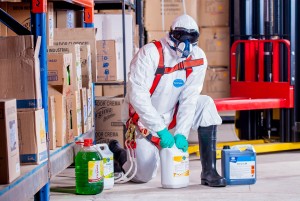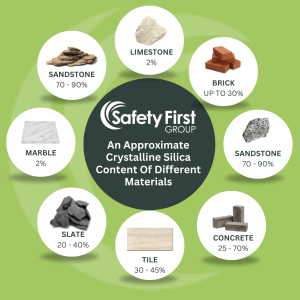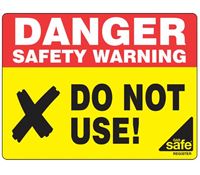 Respirable crystalline silica (RCS) is found in stone, rocks, sands and clays.
Respirable crystalline silica (RCS) is found in stone, rocks, sands and clays.
Silica dust is deadly, killing hundreds of people in the UK each year. Because silica dust is found in a lot of building materials, it’s difficult to avoid. But avoid it, you must. Because the law, and your health, require you to. How much silica dust is harmful, and what are the silica dust exposure limits?
Silica dust kills around 800 people every year in the UK.
And if you work in construction, silica dust is difficult to avoid.
If you carry out work that requires you to cut, sand, drill or carve materials containing silica, you create and release dust. This fine dust is known as respirable crystalline silica (RCS). This fine dust is what can be inhaled deeply into your lungs, causing long-term irreversible damage to your health.
Approximate Crystalline Silica Content in various materials

You can find out more about WELs and how to calculate them HERE
Exposure to RCS over a long period can cause fibrosis (hardening or scarring) of the lung tissue with a consequent loss of lung function. Sufferers are likely to have severe shortness of breath and may find it difficult or impossible to walk even short distances or up stairs. The effect continues to develop after exposure has stopped and is irreversible. Sufferers usually become house- or bed-bound and often die prematurely due to heart failure.
Acute silicosis is a rare complication of short-term exposure to very large amounts of silica. This condition is life-threatening and associated with very significant clinical consequences.
Silica may also be linked to lung cancer. Precautions taken to control the risk of fibrosis will serve to control the risk of lung cancer. Workers with silicosis are at an increased risk of tuberculosis, kidney disease and arthritis. Exposure to RCS may also cause chronic obstructive pulmonary disease (COPD).
The Control of Substances Hazardous to Health (COSHH) Regulations apply to any substances that can harm health. That doesn’t just mean chemicals or substances in packaging and containers that you buy in. It also includes hazardous dust that is produced as part of your work processes.
Exposure monitoring is needed for work with harmful substances, such as asbestos and lead may also be required as part of the COSHH risk assessments. Our specialist team is highly qualified in the different methods of monitoring exposure. No matter how complex the issue, Safety First can find the right sampling strategy for you.
Safety First is experienced in delivering a complete range of occupational exposure monitoring services to provide you with confirmation that your control measures are adequate and workplace exposure limits are not exceeded.
Contact us if you wish to find out more, alternatively contact Safety First Group Ltd.
Guest Post.

If you want your business to run compliantly and efficiently, it’s important to pay attention to best practice in implementing health and safety policy.
The Health and Safety Executive (HSE) website contains useful information on the workplace laws that cover the processing, manufacturing and packaging of a wide range of goods, including:
These laws therefore cover a wide range of equipment and accessories.
Packaging and labelling
As well as the safety of the goods themselves, there are guidelines about how they are packaged and marked or labelled. These are to ensure the safety of workers who handle the goods and transport them, as well as the consumers who buy them. Appropriate safety and warning labels ensure workers are aware of dangerous goods and hazards, so goods can be handled, stored, transported and distributed according to best practice.
Packaging labels are used to make sure goods are handled according to the nature of their contents by indicating, for example, if they contain something that is fragile, hazardous or delicate. They are used by manufacturers to ensure the safety of their products during storage and distribution.
Safety labels
There is a huge range of safety labels available that are designed to meet all business labelling needs. For example, most workplaces use access labels to indicate entrances and exits, accessible areas, prohibited areas and convey other access-related instructions. Fire safety labels are used to guide employees and visitors in the event of a fire, while first aid labels are used to address the treatment of injuries.
Among general safety labels are those that warn of potential hazards, such as very hot water in a washroom or hot surfaces in a kitchen. Responsible employers should clearly label where water suitable for drinking can be found and apply warning labels to outlets where the water is not suitable for drinking.
There are also specific types of safety stickers and hazard labels available for:
Legal requirements
In addition to general legislation, special requirements apply to several business sectors. These include retailers, as well as those who manufacture, process or distribute the following:
Taking the time to ensure your business is complying with workplace law is very important. If you have any doubts or questions, it’s always best to check with your local trading standards office, as this is a good way to make sure you are trading legally. You can also use your local office to report anyone trading illegally.
Finally, while complying with the law is essential, best practice for using safety labels should also become part of your internal business processes, as it will help minimise the risk of accident or injury, ensuring your employees are working in a safe, healthy environment.
Contact us should you require assistance.
Do you know the difference between a safety data sheet and a COSSH assessment, and why both are necessary to assess the risks involved when working with a hazardous substance.
SDS stands for Safety data sheets. They provide information on chemical products that help users of those chemicals to make a risk assessment. They describe the hazards the chemical presents and give information on handling, storage and emergency measures in case of an accident.
Many people may still be familiar with Material Data sheets or MSDS. The old MSDSs could follow any number of different formats, and could include different kinds of information with different levels of detail. The SDS format is much stricter, it is made up of sixteen sections, and each section includes specific information using a standardized classification method.